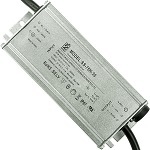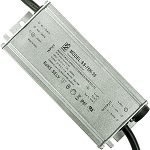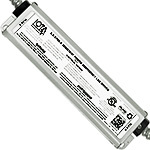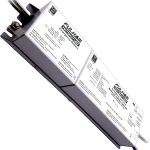LED Drivers
What Is an LED Driver and Why Do You Need One?
An LED driver, also known as an LED power supply, is an essential component that regulates power to your LED lighting. Much like a ballast in fluorescent systems or a transformer for low-voltage bulbs, the LED driver power supply converts high-voltage AC (alternating current) to the low-voltage DC (direct current) that LEDs require.
Without the correct driver, LEDs can flicker, underperform, or even fail prematurely due to inconsistent voltage or current.
When Do You Need an External LED Driver?
Some LED products—like household A19 bulbs or integrated fixtures—contain built-in drivers. But in many cases, an external LED driver is required, especially for:
- LED strip lights and tape lights
- Cove lighting and accent lighting
- LED panels and troffers
- Landscape and architectural lights
- Commercial signage and displays
If your fixture requires an external driver, the product spec sheet will typically indicate the correct type and rating.
When to Replace an LED Driver
Even if the LED appears to have failed, the actual problem is often the LED driver power supply. Signs your driver may be faulty include:
- Overdriving: Too much power, causing LEDs to overheat or fail prematurely
- Underdriving: Insufficient power, resulting in dim lighting and poor performance
- Complete failure: LEDs no longer illuminate despite good wiring
- Heat damage: Excessive ambient temperatures can degrade driver efficiency and longevity
Replacing the driver instead of the entire fixture can save both time and money—especially in commercial applications.
Types of LED Drivers
Constant Current LED Drivers
Designed for LEDs that require a fixed output current (in amps) with a variable output voltage range. Ideal for:
- Backlighting and signage
- Commercial LED displays
- Applications requiring consistent brightness
Warning: Using a driver with the wrong current rating can shorten LED lifespan or damage components.
Constant Voltage LED Drivers
Designed for LEDs that require a fixed output voltage (usually 12V DC or 24V DC) with a capped current. Common uses include:
- Under-cabinet lights
- Strip and rope lights
- Stair and accent lighting
These drivers accept 120V–277V AC and convert it into stable DC output.
Additional Driver Options Available
- AC LED Drivers: For LEDs requiring AC voltage input
- Programmable Drivers: Customizable output settings for unique applications
- Dimmable Drivers: Compatible with 0–10V and other dimming systems
- Outdoor-Rated Drivers: Weatherproof and suitable for wet or damp environments
When choosing the right LED driver power supply, always verify the input/output specifications and confirm compatibility with your LED system.
Need help? Call our lighting experts at 1-844-996-5011.
Frequently Asked Questions (FAQs)
What is an LED driver?
An LED driver is a power regulation device that converts high-voltage AC into the low-voltage DC needed to power LED lights safely and consistently.
What is the difference between a constant current and constant voltage LED driver?
Constant current drivers provide a fixed current and variable voltage, ideal for LEDs that require consistent brightness.
Constant voltage drivers provide a stable voltage (12V or 24V DC) with a max current limit, commonly used for strip lights and rope lights.
How do I know if my LED needs an external driver?
Check the product specifications. LED strips, panels, and troffers typically require external drivers. Household LEDs usually have integrated drivers.
Can I replace a failed LED driver myself?
Yes—if you match the original driver’s input and output specs (voltage, current, wattage). Always disconnect power and follow safety precautions, or consult an electrician.
Are all LED drivers dimmable?
No. Only specific dimmable LED drivers are designed to work with 0–10V or other dimmer systems. Check product specs before purchasing.





.jpg)